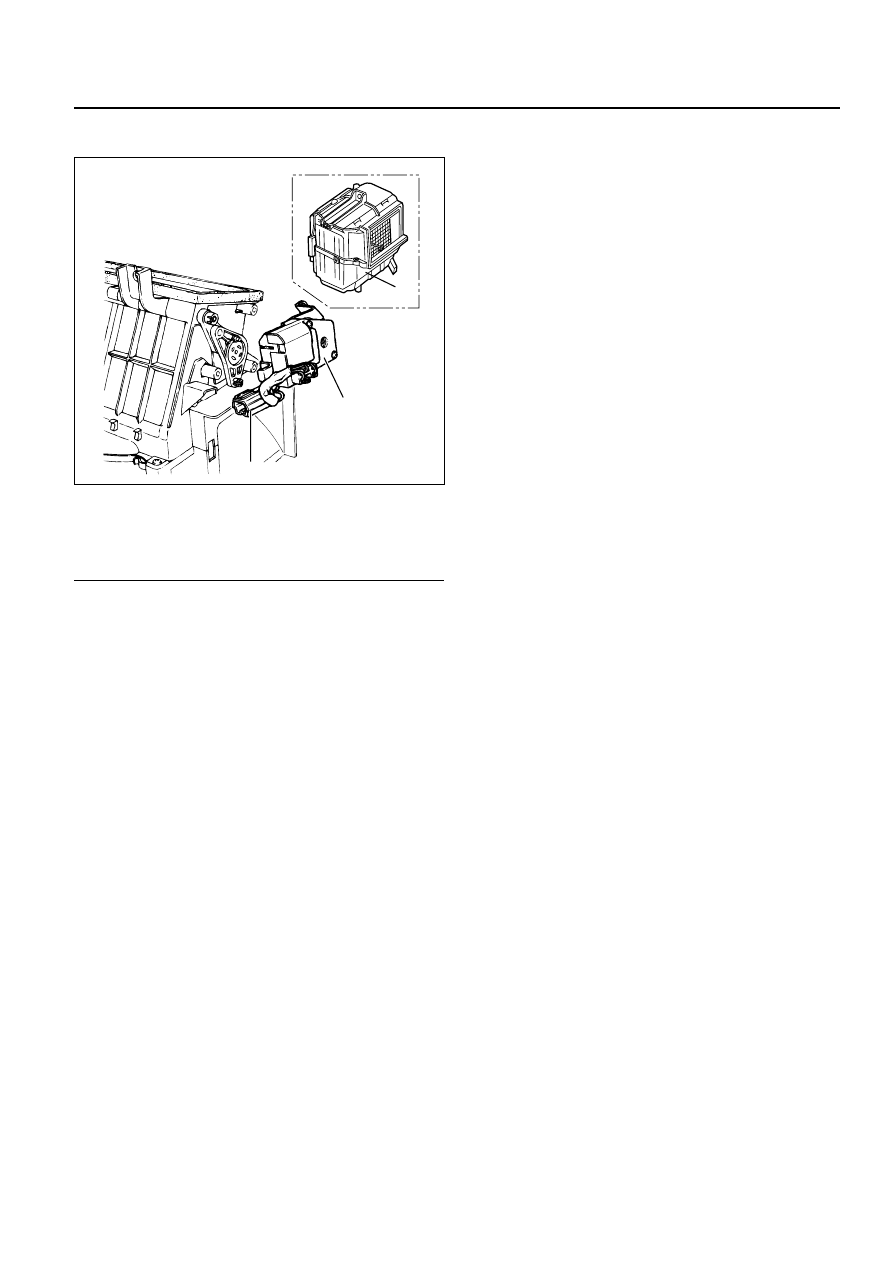Opel Frontera UBS. Manual - part 934

1B–130 AIR CONDITIONING
Intake Actuator
Legend
(1)
Evaporator Assembly
(2)
Intake Actuator
(3)
Intake Actuator Connector
Removal
1. Disconnect the battery ground cable.
2. Discharge and recover refrigerant.
•
Refer to Refrigerant Recovery in this section.
3. Remove the evaporator assembly.
•
Refer to Eevaporator Assembly section.
4. Disconnect the intake actuator connector.
5. Remove the intake actuator.
Installation
To install, follow the removal step in the reverse
order.
1
2
3
860RX018
This illustration is based on RHD